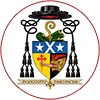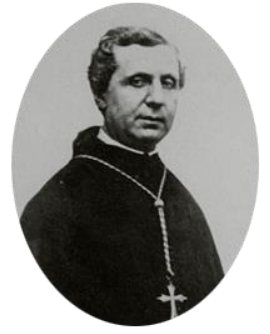Wednesday 9th March this year marked the 150th anniversary of the Official Approval of our Benedictine Congregation, by Blessed Pope Pius IX, on 9th March 1872.
As requested by our Abbot President, here at Pluscarden we kept the three days from 7th March as special days of prayer for our Congregation. In our modern times, when monastic vocations in the secularised West are comparatively few, there is an emphasis especially on the weakness and fragility of many communities, and the correspondingly increased need for fraternal solidarity and mutual support.
The Benedictine Congregation to which Pluscarden Abbey belongs is officially called the Subiaco-Casinese Congregation. It remains the largest of all the Benedictine Congregations, with currently 1250 monks in 64 monasteries, spread around 24 countries of the world. In addition there are 45 associated monasteries of Benedictine women.
The driving force behind the foundation of our Congregation was Abbot Pietro Casaretto (1810 - 1878). What he began, and what Pope Pius IX approved, was however very different from what exists now. Then it was called "The Casinese Congregation of the Primitive Observance". Casaretto wanted strict observance of the Holy Rule, with perfect uniformity of observance among the various houses, including Vigils always celebrated at midnight. He also wanted a spirit of missionary outreach. To guard especially against monks ever owning private property, he legislated for minimal local autonomy, with monks taking their vows to the Congregation rather than to their own Abbey, and all authority resting in the hands of the Abbot General.
The Congregation spread and flourished, by Divine Providence, outside Italy. Most notably in England there was the Abbey at Ramsgate, in France that of La Pierre-qui-vire, and in Spain that of Montserrat. Through these houses especially, missions came to be established in Australia and New Zealand, in the Philippines and South East Asia, and in Africa.
Casaretto was a man of many contradictions, and nobody would think of proposing him for canonisation. Nevertheless, what he founded still endures, and wishes to celebrate that fact! The Congregation exists to support and encourage the monastic life of its member monasteries. Individual monks are made aware of it in particular through the regular canonical Visitation, and through the celebration of Provincial and General Chapters. More generally an attempt is made to keep in touch through the sharing of news, and where possible, through occasional monastic projects or exchanges.

